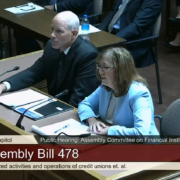FDIC Numbers Show Positive 2022 Year-End Position of Wisconsin Banks
Wisconsin banks finished 2022 in a strong financial position. Fourth-quarter data from the Federal Deposit Insurance Corporation (FDIC) show consumers paying down debt and putting money into savings at the bank. The housing market remained active as home prices cooled slightly, the agricultural industry had a favorable year, and businesses continued to grow throughout 2022. While the economy is experiencing ongoing inflationary pressure and geopolitical concern, Wisconsin banks remain well capitalized and serve as trusted partners to help their customers achieve their financial goals.
Notable indicators include:
- Residential loans continued to grow, both quarter over quarter (3.09%) and year over year (13.71%). With low inventory, homes continue to sell quickly. Despite recent interest rate increases, rates remain relatively low in historical context.
- Commercial lending increased year over year (11.09%) but slowed toward the end of the year as business owners held off on borrowing due to concerns of recession in 2023.
- Farm loans decreased 20% quarter over quarter yet remain up 8.12% year over year. While farmland values remain strong, sharp interest rate increases have resulted in the softening of some farm loan demand. An increase in farm income toward the end of 2022 also led to an increase in loan repayments.
- Credit quality continued to be strong as borrowers kept up to date on their payments. Loans and leases 90 or more days past due decreased 19.74% year over year and decreased 1.40% quarter over quarter.
- Deposits continued to grow, albeit at a slower pace as inflation limited the amount consumers were able to put into savings.
Statement on the release of fourth-quarter 2022 Federal Deposit Insurance Corporation (FDIC) numbers from Rose Oswald Poels, president and CEO of the Wisconsin Bankers Association:
“The fourth-quarter FDIC numbers show Wisconsin’s banking industry in a solid position. While inflation persists in driving up expenses for households and businesses, the overall picture shows that more borrowers are keeping current on their loans and consumers are putting money into savings at their bank.”









